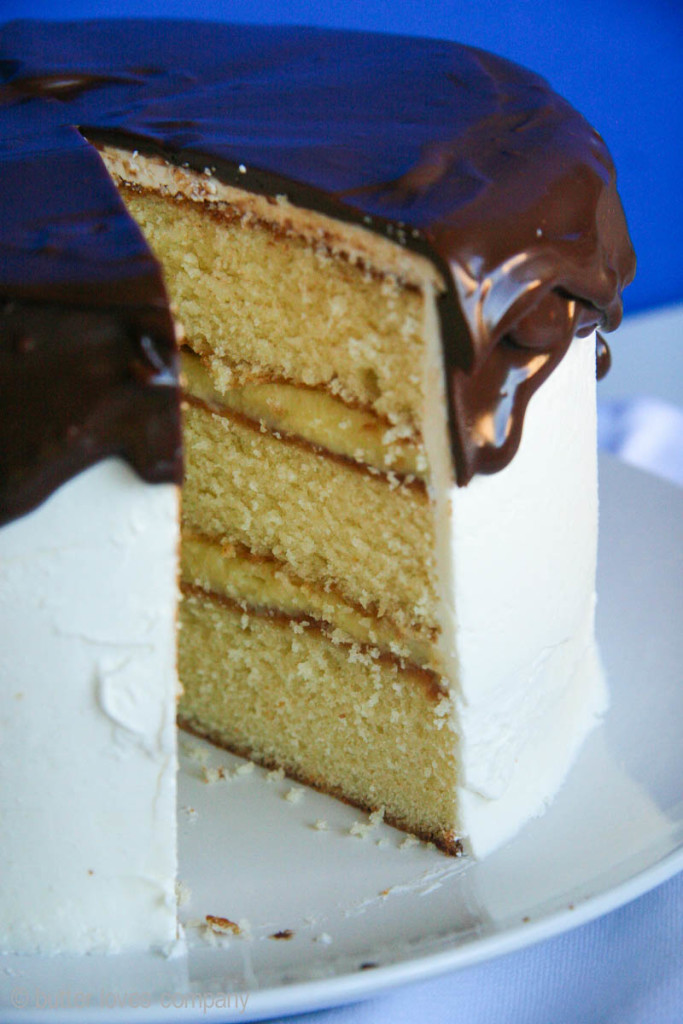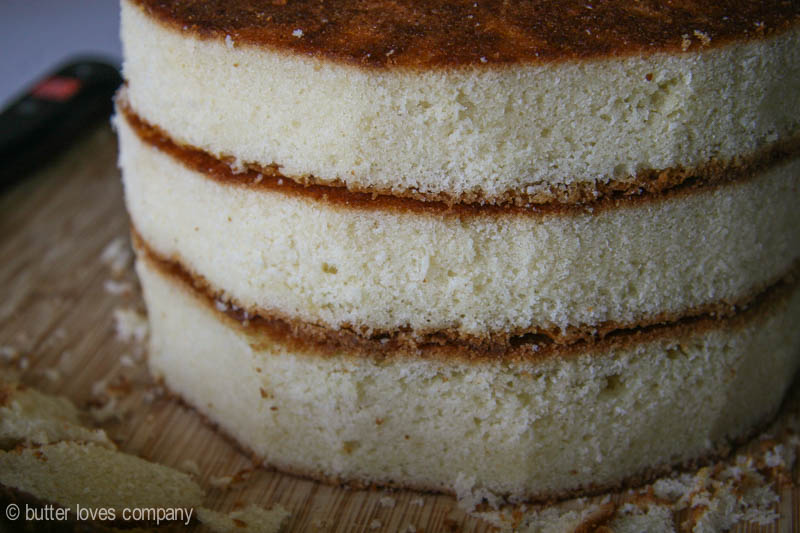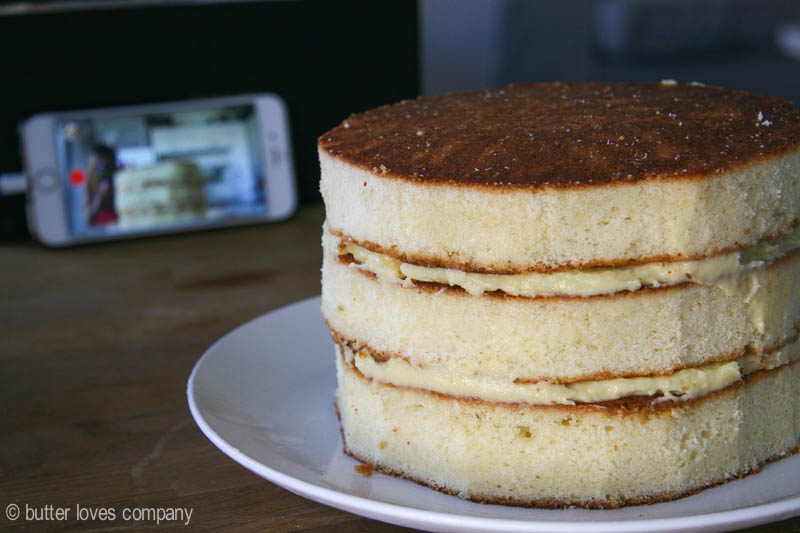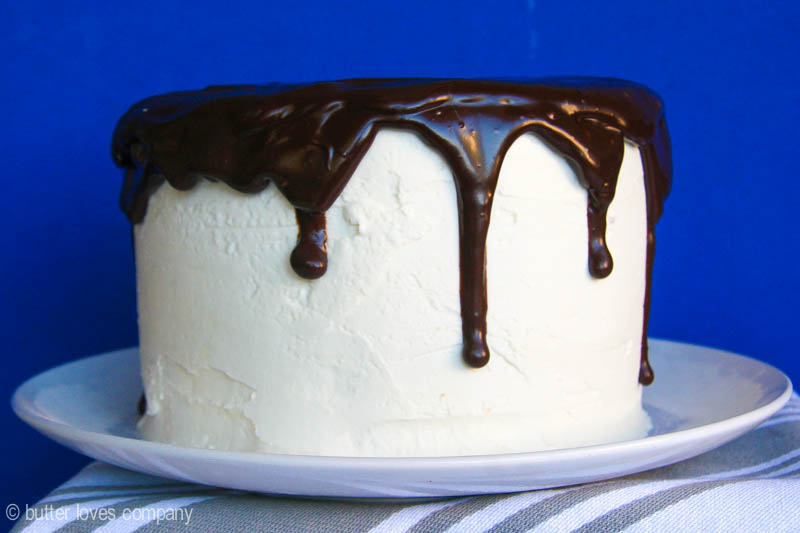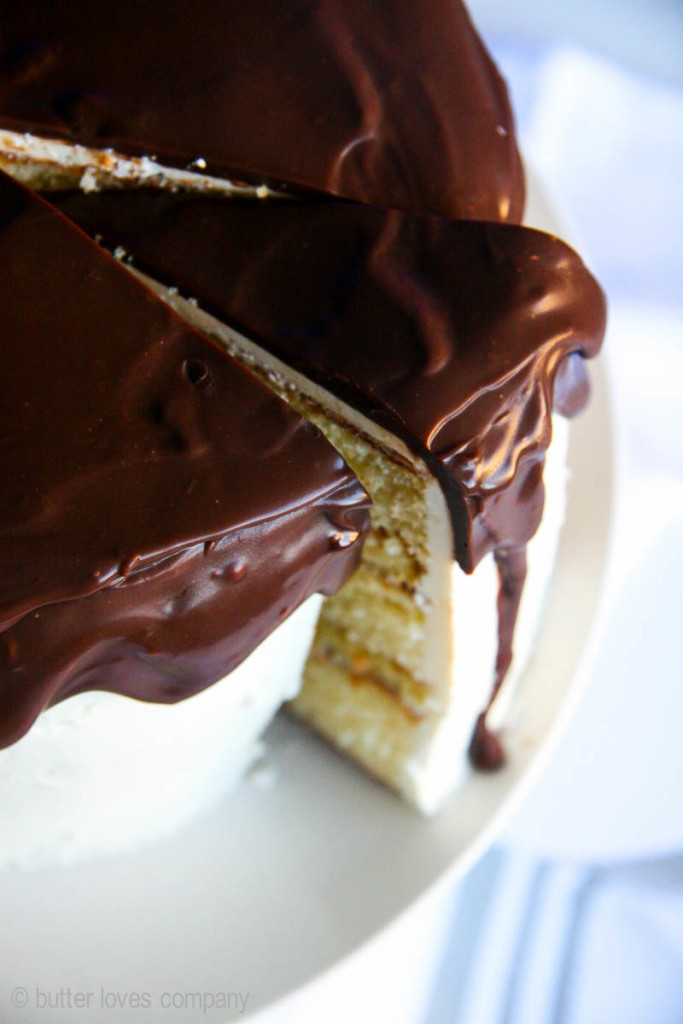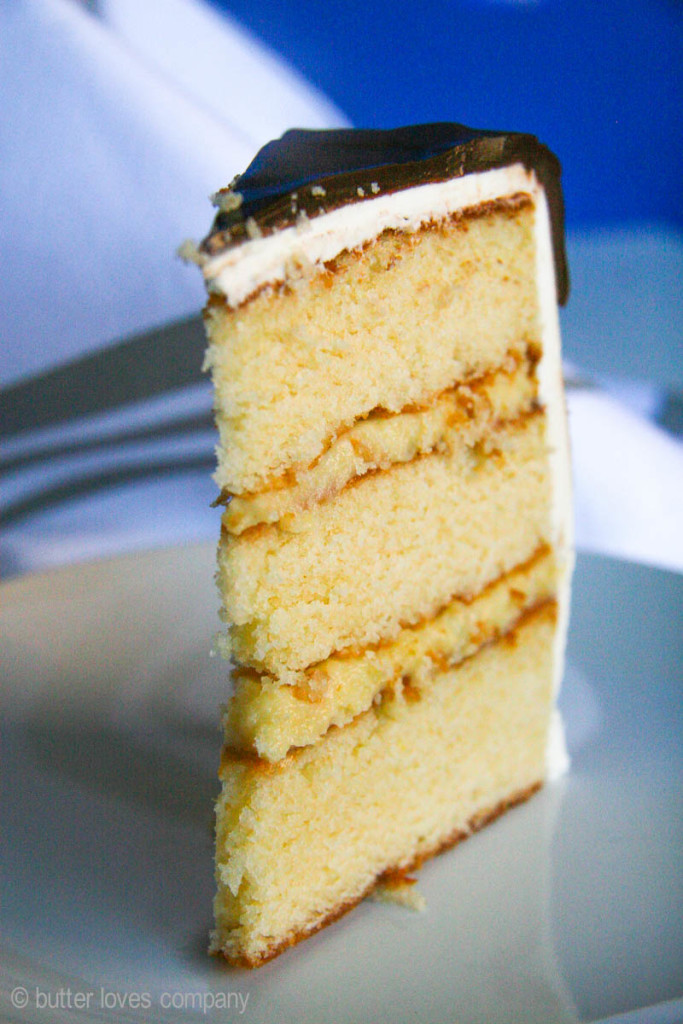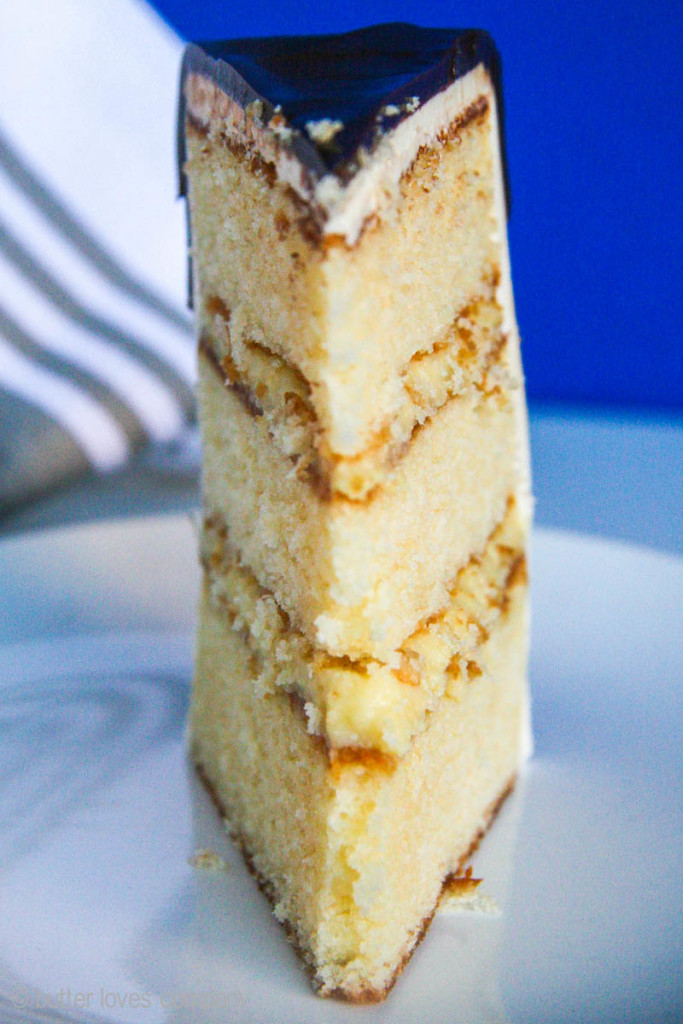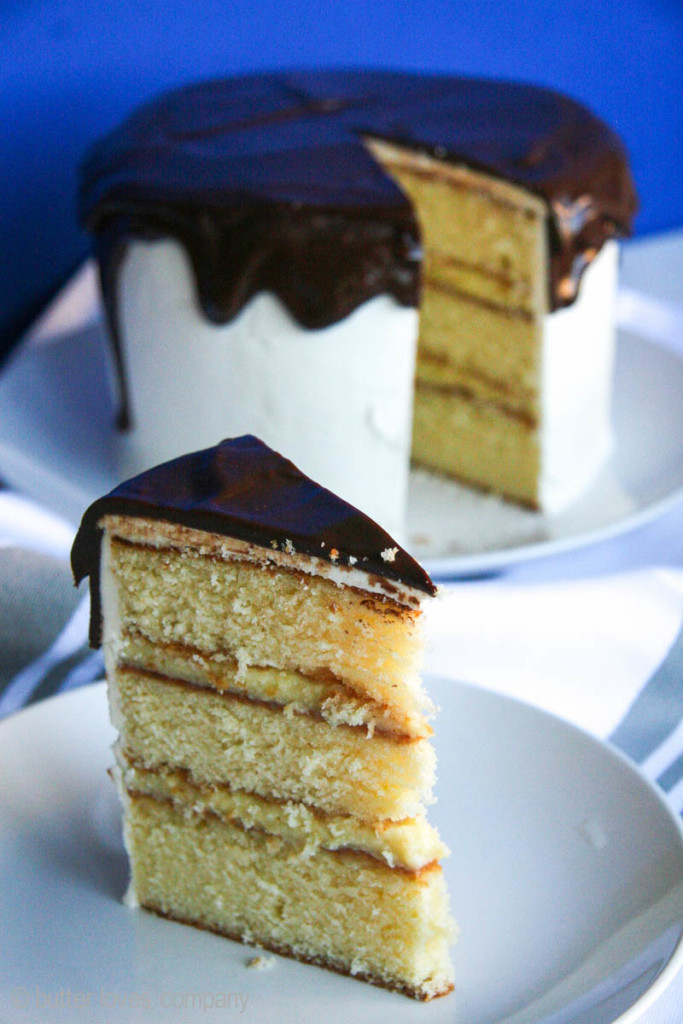 I often wonder if people outside of Boston are completely confused by the concept of Boston Cream Pie. I mean, it’s not a pie by any traditional standards. There is no crust or shell or crumble topping. It’s not made in a pie dish. Oh yea, and Boston Cream Pie is a CAKE!
I often wonder if people outside of Boston are completely confused by the concept of Boston Cream Pie. I mean, it’s not a pie by any traditional standards. There is no crust or shell or crumble topping. It’s not made in a pie dish. Oh yea, and Boston Cream Pie is a CAKE!
Theory has it that Boston Cream Pie was created at the Parker House Hotel in Boston in 1856. This is the same hotel credited with the birth of the ‘Parker House’ roll; you know those delicious, buttery, addictive fold-over dinner rolls? Some magic was certainly happening in that kitchen in the 1800s…
The official dessert of Massachusetts, Boston Cream Pie is typically made up of vanilla cake filled with cream or custard and topped with chocolate. This version is a Boston Cream Pie Cake and consists of three layers of moist and tender vanilla cake layers, a classic pastry cream filling, white chocolate buttercream frosting, and finished with chocolate ganache. Think of it as a somewhat fancied up Boston Cream Pie. If you’d like a more traditional Boston Cream Pie, make only two layers of cake, use all the pastry cream in between those layers, and top with the ganache (skip the white chocolate buttercream).
P.S. In case you missed it, I shared some behind the scenes pics of this cake in process on my snapchat (butterlc), instagram, and Facebook. If you have any interest in seeing some dorky kitchen dancing and baking fails, hop over to the social icons in the right panel and follow along. There is guaranteed to be lots of that to come!!
boston cream pie cake
vanilla cake recipe adapted from just a pinch
total time: 3–4 hours to make cake, frosting, and fillings, and assemble (includes chill time)
makes one 3-layer 9-inch frosted and filled cake (FYI: I made a 3-layer 8-inch cake using pans with high edges and the only adjustment was keeping my eye on the cooking time.)
vanilla cake layers
Ingredients:
1 cup (2 sticks) butter, softened
1/2 cup vegetable shortening
3 cups granulated sugar
5 eggs, room temperature
3 cups all-purpose flour
2 teaspoons baking powder
1/2 teaspoon salt
3/4 cup whole milk, room temperature
1/4 cup Greek yogurt, room temperature
2 1/2 teaspoons vanilla extract
Instructions:
- Preheat the oven to 350°F. Grease three 9-inch round cake pans with nonstick baking spray or butter. Line the bottom of each pan with parchment paper and then grease the top of the paper. Set the pans aside.
- In the bowl of an electric mixer fitted with the paddle attachment, cream together the butter and shortening on medium speed until light and fluffy, about 3 minutes. With the mixer on low speed, add the sugar—one cup at a time—mixing to incorporate after each addition. Add the eggs one at a time, mixing each egg until it is fully incorporated before adding the next.
- In a separate medium bowl, sift together the flour, baking powder, and salt. In a separate small bowl, stir together the whole milk, yogurt and vanilla until it is smooth. Alternate adding the flour mixture and the milk mixture to the butter mixture, beginning and ending with flour mixture. Stop the mixer and, with a spatula, give the bowl a scrape and stir to make sure all the ingredients are well combined.
- Divide cake batter between prepared cake pans. Pop them in the oven and bake for 25 to 30 minutes, or until a toothpick inserted in the center comes out clean. Remove from the oven and cool the cake in their pans for 5 minutes and then transfer to a wire rack to cool completely. Once they are cool, wrap each layer in plastic and place in the freezer until you are ready to assemble the cake.
Pastry Cream (makes about 2 cups)
Ingredients:
1 1/4 cups (300g) whole milk
1/2 cup (100g) sugar
1/4 cup (30g) cake flour
1/2 teaspoon salt
4 large egg yolks
1 teaspoon vanilla extract
Instructions:
- In a medium saucepan, scald the milk over medium-high heat (bubbles start to form around the edge of the pan, but the milk is not boiling). While the milk is heating, in a small bowl, stir together the sugar, flour and salt. (Mixing the flour with the sugar will prevent the flour from clumping when you add it to the egg yolks.) In a medium bowl, whisk the egg yolks until blended and then slowly whisk in the flour mixture (it will be pasty).
- Remove the milk from the heat and slowly add it to the egg-flour mixture, a little at a time, whisking constantly (you want to make sure that you only add a little at a time so the hot milk doesn’t cook the eggs in the mixture). When all of the milk has been incorporated, return the contents of the bowl to the saucepan and place over medium heat. Whisk continuously and vigorously for about 3 minutes, or until the mixture thickens and comes to a boil. At first, the mixture will be very frothy and thin; as it cooks longer, it will slowly start to thicken until the frothy bubbles disappear and it becomes more viscous. Once it thickens, stop whisking every few seconds to see if the mixture has come to a boil. If it has not, keep whisking vigorously. As soon as you see it bubbling, immediately go back to whisking for just 10 seconds, and then remove the pan from the heat. Boiling the mixture will thicken it and cook out the flour taste but if you let it boil for longer than 10 seconds, the mixture can become grainy.
- Pour the mixture through a fine-mesh sieve into a small heat-proof bowl. Stir in the vanilla, then cover with plastic wrap, placing it directly on the surface of the cream. This will prevent a skin from forming (Kind of like pudding!). Refrigerate for at least 4 hours, or until cold, or up to 3 days.
white chocolate buttercream (makes about 3 cups)
Ingredients:
3/4 cup sugar
4 large egg whites, at room temperature
1 1/2 cups unsalted butter (3 sticks), at room temperature
4 ounces white chocolate, melted and cooled to room temperature
Instructions:
- Fill a small saucepan with about 1/2 inch of water and heat it on the stove so the water is simmering. In a large heat-safe mixing bowl (the bowl from your stand mixer works perfectly here), add the sugar and egg whites and set the bowl over the the simmering water. Whisk constantly until the sugar melts and the mixture is thin and warm. Be careful not to let the bottom of the bowl touch the simmering water directly as it could cook the eggs! We just want the residual heat here.
- Remove the bowl from the heat and fit it back into your stand mixer (or pour the mixture into the bowl of your stand mixer). Using the whisk attachment, whisk on high speed until stiff peaks form, about 5 minutes. Adjust speed to low and continue beating until the mixture is cool, about 15 minutes.
- Keep the mixer on low speed and begin dropping in pieces of the butter, a tablespoon or two at a time. Wait until the butter is incorporated before adding the next piece. It is possible the mixture will look like it is curdling for a little while, but it will come together. Once you have added all the butter, beat in the white chocolate until the frosting is fluffy and smooth. The buttercream will freeze well for up to 6 months. Bring it back to room temperature and re-beat before using.
chocolate ganache (Makes about 2 cups)
Ingredients:
1 1/4 cup semisweet chocolate, roughly chopped (or use semisweet chocolate chips)
1 cup heavy cream
2 tablespoons butter
Instructions:
- Place the chopped chocolate in a medium-sized heatproof bowl. Set aside. Heat the cream and butter in a small saucepan over medium heat. You can also heat the cream and butter in the microwave. Bring just to a boil and immediately pour the boiling cream over the chocolate and allow to stand, without stirring, for a few minutes. Stir gently (as you do not want to incorporate air into the ganache) with a spoon or whisk until smooth.
Assemble:
- Place one layer of the cake on the center of a cake board or cake platter. With an offset spatula, evenly spread half of the pastry cream on the top of the first layer of cake. Top with another layer of the cake and spread the remaining half of the pastry cream on the top of the second layer. Top with the third and final layer of cake.
- Using and offset spatula and/or piping bag, frost the entire cake with the white chocolate buttercream as desired. At this point, I put the entire cake in the fridge for a few minutes to firm up before I topped with ganache. If you have room, it might be helpful, but not necessary.
- Pour the slightly cooled ganache in the center of the top of the frosted cake, a little bit at a time. Using an offset spatula, smooth the ganache over the top and push gently to the edges so that is drips over randomly. Let the ganache cool so it firms up and you’re all set!
